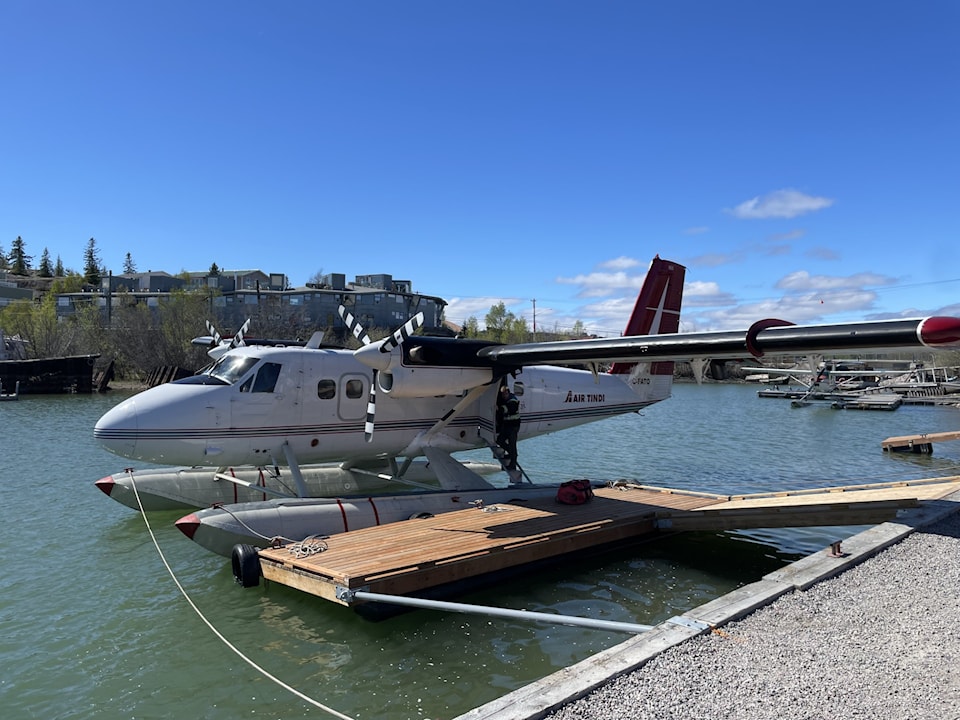In response to Great Slave Lake's alarmingly low water levels, Air Tindi has had to come up with solutions. One of them: floating docks.
Bob Schnurr, Air Tindi's business manager, said the need for the docks became apparent last summer.
"We were in the second year of a drought and the water levels of Great Slave Lake were dropping to record lows," he said. "We were having issues here with our float planes."
According to the Department of Environment and Climate Change, Great Slave Lake's water levels have receded to a record low. Compared to this time last year, the lake's water levels are down by about half a metre.
"We knew we would have an issue this year," said Schnurr. "We started working on solutions right away."
There's a steady rise and fall beneath the feet of anyone stepping onto the floating dock at Air Tindi's lakeside base and into one of their planes. The planes fly to locations without a landing strip or an airport, Schnurr said, and will carry anything that will go to a fishing lodge, a cabin and even any old mine sites that are being cleaned up.
As for loading the planes, the floating docks make for a bit of a challenge, he acknowledged.
"Whatever solution we went with, it was going to be bit of an arduous process, in this case, the floating docks, the airplane is parked a little farther away than the main dock and loading on and off ramps is going to be a little more time-consuming."
Schnurr added he's hoping that the lower water levels are a temporary issue and they will come up again next year.
The docks aren't the only way Air Tindi has had to adapt to a changing climate. Schnurr said that every place they've been to is like going to an unfamiliar spot.
"Any of the lodges, any of the camps, it's like going to a new place for the first time, so we have to be very careful where we go and when we go," he said. "There are rocks and reefs and all kinds of things that normally would be four or five, six feet under the water and are now only two or three feet under the water."
According to the GNWT's water monitoring bulletin, in the last five years, water levels on Great Slave Lake have shifted from being extremely low in 2019, back up to the highest on record from 2020 to 2022. They fell again in 2023 and have so far continued trending downwards.
